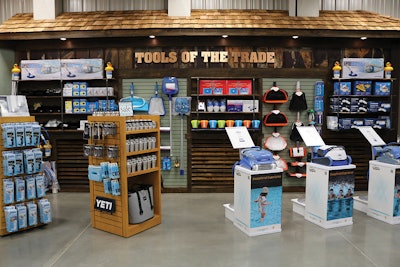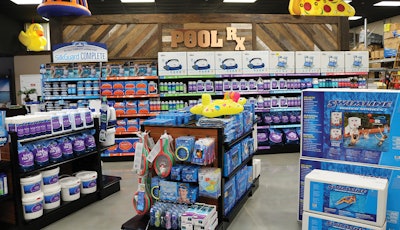
To be or not to be...profitable: That is the question! Is profitability really a matter of life and death? Yes! Your business literally thrives when it is profitable and dies when it is not.
The real question is this: How do you get to profitability? It starts with your margins. In this article, we will take a look at the building blocks for creating a "philosophy of margins," talk to some industry-leading experts about how they achieve "good" margins, and provide a list of best practices you can start implementing today to boost your margins.
THE "PHILOSOPHY OF MARGINS"
Margins can best be understood in the larger picture of your company and what is important to you as an owner. Perhaps you could call this a "philosophy of margins." There is no "one-size-fits-all" approach, but there are some basic principles that should help you understand the margins you need to run your company.
To get started, what is a margin? Ted Lawrence, vice president of Pro Sales at KIK Consumer Products, says: "Most people do not know how to calculate margins, it is not as simple as adding 50% to their cost. That is markup. Margin is the difference between the cost and the selling price, not the percentage of increase." To illustrate Ted's point, if you pay $50 for a small bucket of tabs and mark it up 50%, your selling price would be $75. If you sell the product for $100, you would deduct the cost of $50, which would leave you with $50. If you divide the remaining $50 by the selling price of $100, you arrive at a 50% margin.
This distinction is important because if you take the money you bring in from the sales of your retail products (total revenue) and subtract what you paid for the products (the total cost of goods), you are left with the gross profit. The higher the gross profit, the easier it is to cover variable cost (the stuff that changes based on sales activity such as commissions, shipping, cost of goods, etc.) and fixed cost (rent, utility bills, insurance, etc.). There are a variety of ways to account for these expenses, and for that, you should consult your accountant; however, for the purpose of this article, it is important to know that your gross profit margins are used to cover monthly expenses. What is left is what you have worked so hard for: your net income.
You may be asking how this relates to helping you create a meaningful philosophy of margins. It's simple. Your margins should generate enough gross profit to cover all of your expenses, and then you need to be happy with what you have left. You know your market. You know what margins will generate the gross profit you need. Once you get down to the net income, are you happy with it? Is 10% enough for you or does it have to be 20%? Either way, it all starts with the margins, and there are some guidelines you can follow when you set your margins to help your business thrive.
A "GOOD" MARGIN
Targeting a "good" margin is like shooting at a moving target, but Lawrence suggests, "Specialty retail commands specialty margins, hallmark margins of approximately 50% on noncompetitive products should be the cornerstone of your philosophy." The most important question is how do you get to 50%?
The answer is to find a blend of margins on your products that makes the most sense to your business and that gets you as close to 50% as possible. Kara Weed of Ultra Modern Pools in Kansas says she works to "blend out the whole chemical department at 50%. We do have certain sanitizers that we offer at a lower margin to compete with online competitors." Travis Hogan of Fiesta Pools and Spas in Oklahoma says he works to get 40% to 50% and then goes on to say: "On our more competitive items, we will take a smaller margin, but try and maximize what the market will bear and still be competitive."
My research and interviews with outstanding pool and spa professionals led me to the conclusion that retail profit margins can generally range from 40% to 60%. However, what was clear in the interviews was that a 50% blended margin is what is considered a "good" margin. So, how do you blend your margins? My suggestion is to become a margin mixologist!
MARGIN MIXOLOGY
What if you crafted your margins the same way a mixologist crafts the perfect cocktail: with the perfect blend! Speaking of a perfect blend, let's take a look at chemicals. The key is to price sanitizers and oxidizers at a more competitive price, and thus a lower margin. For example, do some research into other local pool companies, big-box stores, and the internet to see what they charge for pool shock, trichlor tabs, and algaecides. From there, look to see if your provider has a similar product that you can price more competitively. Once you determine the price you are comfortable charging, check your margins. If you are somewhere near 40%, and that works for your company, go for it.
Because consumers generally do not shop for balancers, push the boundaries a little on pH, calcium, cyanuric acid and alkalinity products to see if you can get closer to 60%. If your preferred chemical supplier manufactures proprietary products that are not shoppable, those items should also be closer to 60% and your lab technicians should be trained to differentiate those products for consumers. Other products — like sequestrants, flocculants, enzymes and other specialty treatments — should be priced greater than 50%.
Now that you have priced your product, a good "margin mixologist" must take the time to find the perfect blend of sales between lower margin items and higher margin items. How does that work? To keep this simple, you must sell the same revenue in the 60% margins and the 40% margins to arrive at a blended 50% margin. This applies equally to items with 58% margins and items with 42% margins. You can continue this scale any way you want, but the idea is that getting to your blended average target requires a lot of strategic planning in your retail store. The task of blending your margins can sound daunting, but this is my advice. JUST DO IT! Then, measure the outcome in weekly meetings.
The primary goal of these meetings is to see where your blended average is, determine if you are happy with it, and adjust where necessary. The meetings are vital to your success as you work towards your blended margin goal. Weed says her company publishes its desired margins to the whole company each week and then "discusses it at least twice a month at team meetings." Hogan echoes this: "We meet at least once per week to look over our numbers and see where we are in relation to our goals. If we feel we are off, and margins are slipping, we will see why and adjust accordingly." He goes on to say: "You need to look at your numbers often to know where you are making money and where you might be losing it." This is great advice from two great retailers.
 Clean merchandising is integral to getting higher margins for your products.
Clean merchandising is integral to getting higher margins for your products.
A GUIDE TO MARGIN MIXOLOGY
My goal is to leave you with something you can use today to help boost your margins. If you do not know where to start, reach out! This industry is full of so many great retailers, distributors, manufacturers, regional managers, and others who can help. Without further ado, A Guide to Margin Mixology.
1. Purchase and utilize point-of-sale software. The best way to know your margins is to have reports you can easily access and analyze. This task would obviously take more than a day, but if you do not have one, today is the day to start looking.
2. Do a sample analysis of your current prices. To keep this simple, start with your more competitive items, like shock and tabs, and then move to your balancers and proprietary items. I would suggest double checking the cost in your system. Make sure it is exactly what you are currently paying. Look at what you sell it for, and then use the margin (not markup) formula to determine your actual margin on that product.
3. Start meeting. If you don't do it already, plan your first meeting to discuss margins and then set a meeting at the same time each week. This does not have to be a perfect meeting. Your goal is to have the first meeting, start working with what you have, and then have meetings every week. If you are out of the habit of meetings, schedule the first meeting as soon as you finish this article.
4. Look at how you price your products to the consumer. Walk your floor and look at how the prices are listed on the shelves or on the products themselves. Lawrence gives some great advice on this topic: "As far as putting a price on an item, never use even pricing such as $10 or $20 for the product; the consumer perceives this as not being a deal. Pricing products at $9.57 or $17.89 makes the pricing appear that thought was put into it. It is more believable to the consumer. Try to keep your pricing under certain pricing consumer ceilings. Consumers are sensitive to purchasing products in between $5 to $20, $25 to $50 and $75 to $100. Keeping your pricing in between those ranges for key products becomes digestible for the consumer. High-ticket items should omit punctuation and as many zeros and cents. Which one feels more expensive? $1199.99 or $1199? Consumers are sensitive to pricing that feels expensive, so shorten the price and see the results."
5. Look at your merchandising. It almost sounds simple, but make sure you have a clean store. Walk through your store. Does it look clean? Does the lighting highlight your product? Is there a good flow in your store? Are things labeled clearly? Have you consulted the manufacturers of the products you sell to ask them about their planograms or point-of-purchase materials? How does the store smell? An unparalleled experience — one that appeals to all five senses — is the best way to build trust in your company and value in the product you sell. This is integral to getting higher margins for your product.
6. Develop a strategic merchandising plan. Not only should your store be appealing to the consumer's five senses, but you should be strategic about how you display products. Lawrence recommends that you follow the "rule of three," and goes on to say: "You need to give the consumer at least three choices in order to solidify a decision and to prove to the consumer that you have a selection of product and that they do not need to shop around. Ten percent of the consumers buy the lowest price option. The other 10% purchase the highest price option. This leaves the other 80% to purchase somewhere in between. When you only give the consumer one or two options, they are left with an inability to decide; thus, they leave the store or go to an online resource to help their decision. When you make stocking decisions for your store, 80% of the product in inventory should be the middle-priced item and should be the item that makes you the most margin."
7. Prepare a budget. This takes some time, but if you get the process started now, you will figure it out, and next year, you will have a working budget. Weed says her company prepares "a budget for the year, by month by department. The trick is making adjustments as we go to make sure we can still achieve the bottom line goal if sales don't go as planned. This is a process we are still fine tuning and learning how to use to meet our end goal." A budget is a great way to know where you are in relation to your financial goals, and it provides a great tool for having effective meetings.
IN CONCLUSION
The key to a profitable business is an informed "philosophy of margins" that accounts for fixed and variable expenses and your desired net income. In short, margins matter, and they should be treated as such in your business. Even if you are not a seasoned "margin mixologist," make it your mission to start managing your margins today! Even though this list is not exhaustive, the aforementioned steps can help you get started on your journey towards a "good" margin.
This article first appeared in the September 2024 issue of AQUA Magazine — the top resource for retailers, builders and service pros in the pool and spa industry. Subscriptions to the print magazine are free to all industry professionals. Click here to subscribe.













































